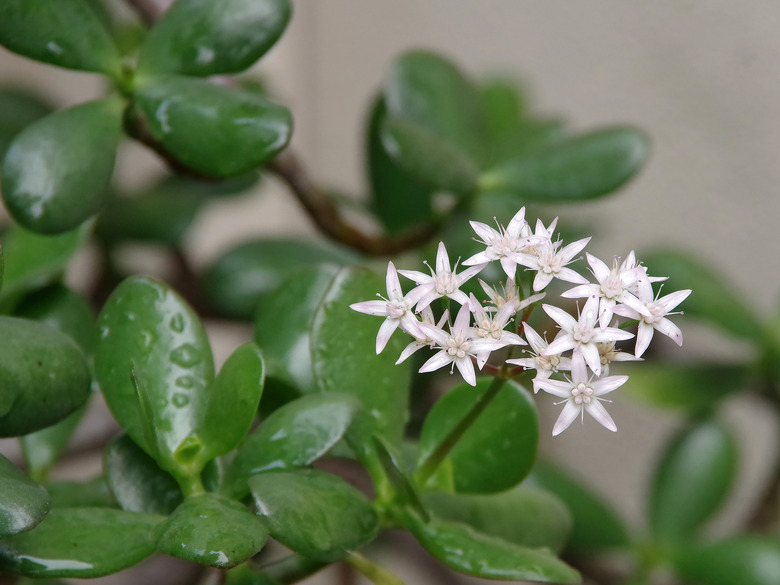What Causes Leaf Drop In Jade Plants?
We may receive a commission on purchases made from links.
It takes only a single leaf to start growing a jade plant (Crassula ovata, USDA zones 11 and 12), which may eventually stand over 5 feet tall. Popular as houseplants, these succulents feature fleshy branches and rounded, glossy leaves. They require very little water and grow best in bright light with at least a bit of direct sunlight.
As your jade plant grows, it will naturally drop older leaves. An increase in the rate of leaf loss, however, may indicate a problem. To fix it, you may need to adjust your watering schedule and check your plant for pests. Low light and cold temperatures may also be to blame, as can leaf shining products.
Underwatering a Jade Plant
Underwatering a Jade Plant
Jade plants that are not receiving enough water often shed their leaves rapidly. If the lower leaves on your plant are shriveling up and then falling off, check the soil. If it is completely dry, water your plant thoroughly. Water a jade plant every time the top inch of its soil is dry.
Jade plants add leaves and shoots during the summer and need more water during those months. The plant will use less water in the winter but will still need a drink every now and then. Don't make the mistake of ignoring a slow-growing winter plant or you could lose it.
Overwatering a Jade Plant
Overwatering a Jade Plant
Just as too little water is a problem, so is too much. Jade plants don't like wet feet and are vulnerable to root rot. Never leave your jade plant's pot in standing water. Check your plant's soil if its leaves turn yellow and start to drop off. If it is damp or soggy, withhold water until the soil dries out completely.
If you notice soft sections on the jade's trunk or branches, remove the plant from its pot and wash the soil away from the roots. Cut off any soft branches or roots and then repot your jade plant in a succulent potting mix specifically formulated for cacti. Use a clean pot when replanting your jade in case the rot is the result of a fungal infection.
Light for a Jade Plant
Light for a Jade Plant
If your jade is losing its leaves at the beginning of winter, it's probably not getting enough light. Move your plant closer to a window but keep it a few inches away from the glass. Winter drafts are just as damaging as low light. If you fear your window is too cold or drafty for the plant, supplement the light it receives with an artificial light source. Pure white CFL bulbs work well for this purpose and last a long time.
Temperature for a Jade Plant
Temperature for a Jade Plant
Jade plants do best at temperatures between 55 and 75 degrees Fahrenheit. Frost will kill the plant, but both colder and warmer temperatures can cause leaf drop. Keep an eye on the thermometer all year, keeping your plant away from drafts and radiators. Remember, too, that window glass can magnify the sun's rays and burn your plant during the summer months.
A sudden change in temperature caused by a move will also cause leaf drop. The leaves will grow back once your plant has adapted to its new surroundings. To prevent this, gradually acclimate your plant to a new location by placing it there only for a few hours at a time. Gradually increase the length of time your jade plant stays in its new location before making the switch permanently.
Jade Plant Potential Pests
Jade Plant Potential Pests
Jade plants are vulnerable to infestations of mealybugs and scale insect. Mealies and scale make jade leaves sticky and can encourage the growth of molds. They also cause leaf drop and deformed leaves.
Treat mealybugs and scale insects by dabbing them with a paintbrush or cotton swab dipped in rubbing alcohol. Avoid insecticidal soaps and sprays as they can damage the plant. Treat any pests you find daily until they are gone.
Avoid Using Leaf Shine Products
Avoid Using Leaf Shine Products
Never use leaf shine products on jade plants as it will cause all their leaves to turn yellow and fall off. Household chemicals and cleaners have a similar effect if they touch the leaves. Jade plant leaves shine naturally if they are dust free and the plant is healthy. If dust dulls the shine on your plant, simply wipe the leaves gently with a soft cloth.
